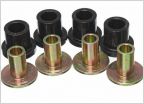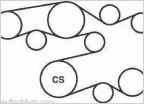-
Welcome to Tacoma World!
You are currently viewing as a guest! To get full-access, you need to register for a FREE account.
As a registered member, you’ll be able to:- Participate in all Tacoma discussion topics
- Communicate privately with other Tacoma owners from around the world
- Post your own photos in our Members Gallery
- Access all special features of the site
Headlight replacement bulb
Discussion in '2nd Gen. Tacomas (2005-2015)' started by 41magmag41, Oct 25, 2015.
Page 2 of 2
Page 2 of 2


 How To: Rear Axle Bearing/Seal Replacement
How To: Rear Axle Bearing/Seal Replacement DIY Recovery Boards
DIY Recovery Boards Rear Diff fluid
Rear Diff fluid Slow speed turn slip indicator issue post-ECGS bushing install
Slow speed turn slip indicator issue post-ECGS bushing install Serpentine belt
Serpentine belt
